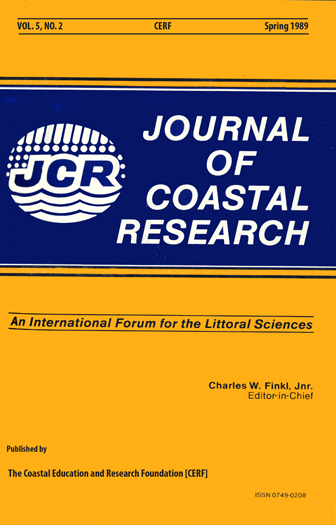Sedimentary Characteristics of Cheniers and the Formation of the Chenier Plains of East China
Keywords:
Huanghi River, Changjiang River, Bohai Bay, chenier, chenier plain, coastal plain, marsh-beach ridge, stratigraphy, paleoenvironment, supratidal zoneAbstract
The cheniers of east China, which form some of the broadest chenier plains in the world, consist of shell and fine sand, and rest on marsh. They are built at the front of the supratidal zone by swash because of a reduction in sediment supply and a relative increase in the strength of wave energy. The formation of the chenier plains on the west coast of Bohai Bay and in north Jianjsu is related to the migration of the lower reach of Huanghe River (Yellow River). But the chenier plain of the Changjiang Delta is related to the shifting of the main channel in the Changjiang estuary over the last 7,000 years. The oldest chenier of the Changjiang Delta formed about 6,500 year BP, it follows that sea level reached or at least approached its present level before 6,500 years BP. On the average, the historic growth rate of the chenier plains is more than 7 m/yr.


